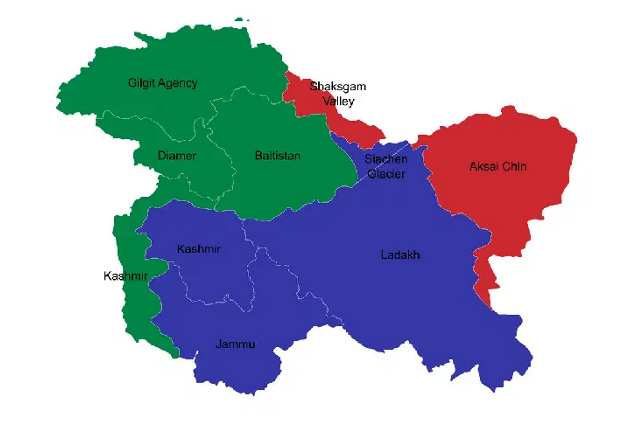Background of the Pakistan-China Relationship:
-
Cold War Era:
-
Initially, Pakistan was a member of two United States-led anti-communist military pacts, SEATO and CENTO.
-
Pakistan was seen as part of the non-Soviet bloc and China, under Mao Zedong, was on the other side of the aisle.
-
On the other hand, India had a working relationship with China. The two countries had the same anti-colonial, non-aligned approach and they together gave the policy of Panchsheel.
-
-
India-China War, 1962:
-
Relationships quickly changed due to the war between India and China in 1962.
-
The India-China war of 1962 led to China developing closer ties with Pakistan.
-
In a boundary agreement in 1963, Pakistan ceded the Shaksgam Valley to China.
-
The Shaksgam Valley or the Trans Karakoram Tract is part of the Hunza-Gilgit region of Pakistan-occupied Kashmir and is a territory claimed by India but controlled by Pakistan.
-
The agreement laid the foundation of the Karakoram highway, built jointly by China and Pakistan in the 1970s.
-

-
India-Pakistan War 1965:
-
Pakistan got support from China diplomatically in the 1965 India-Pakistan war.
-
In fact, analysts say that Pakistan was emboldened into aggression after India’s defeat against China in 1962.
-
-
US-China & Pakistan:
-
The real diplomatic bonhomie began in the 1970s when Pakistan facilitated the outreach between the US-led by Richard Nixon and Henry Kissinger and China’s Mao and Zhou Enlai.
-
-
Nuclear Cooperation:
-
The relationship between China and Pakistan developed over the 1970s and ’80s. Nuclear cooperation was one of the key pillars, especially after India tested its nuclear device in 1974.
-
China has played a significant role in helping Pakistan develop its nuclear energy technology.
-
In September 1986, they signed an agreement to facilitate the transfer of civil nuclear technology.
-
In 1991, China agreed to supply Pakistan with its indigenously developed Qinshan-1 nuclear power plant.
-
After India tested its nuclear device in 1998, Pakistan followed suit —largely due to help from China.
-
History of India-China ties:
-
The 1988 rapprochement between India and China with Rajiv Gandhi’s visit became a watershed moment.
-
There was a clear shift for China, where it saw ties with India from an economic lens and focused on trade, while separately talking to India on the border dispute.
-
From that point onwards China followed a cautious approach vis a vis India and Pakistan.
-
During the Kargil conflict of 1999, China advised Pakistan that they should withdraw troops and exercise self-control.
-
China adopted a similarly cautious approach after the Parliament attack in 2002, the Operation Parakram buildup, as well as the Mumbai terror attack in 2008.
-
This was also visible in the way China responded when the Balakot air strikes took place after the Pulwama attack in February 2019.
Present Status of the India-China-Pakistan Triangle:
-
The US-India closeness started by the nuclear deal in 2005-06 left both China and Pakistan worried.
-
China’s Belt and Road Initiative has manifested in the China-Pakistan Economic Corridor (CPEC) which passes through the disputed territory claimed by India.
-
From China’s perspective, it offers access to the western Indian Ocean through the Gwadar port in Balochistan.
-
However, from India’s perspective, the Gwadar port is a part of the String of Pearls Strategy, for the encirclement of India.
-
India’s August 2019 move to abrogate Article 370 and revoke the special status of Jammu and Kashmir has brought China and Pakistan even closer.
-
In 2020, China signed a defence pact with Pakistan to enhance defence cooperation between the Pakistan Army and the People’s Liberation Army.
-
Pakistan has procured Chinese-made combat drones or unmanned combat aerial vehicles.
-
Pakistan endorses China’s position on its core issues including the South China Sea, Taiwan, Xinjiang, and Tibet.
-
After the Taliban’s takeover of Afghanistan, China has now sensed an opportunity to get into Afghanistan for influence and resources with help from Pakistan.
What are the Implications of China-Pakistan Closeness For India?
-
Two Front War: Convergence between the two countries raises the real spectre of a ‘two-front’ war.
-
Negotiation of Lost Territory: China now looks to negotiate to ‘recover’ Indian territories that it claims namely, Aksai Chin, Ladakh, Jammu and Kashmir, Arunachal Pradesh and Sikkim.
-
It also positions China to play a role in Kashmir and the region.
-
China’s Rise to Global Power Status: China and Pakistan both share a common objective to prevent India’s rise.
-
With China’s rise as a global power, India views its partnership with Pakistan as a greater concern than before.
Way Forward:
-
Improving Relations in South Asian Neighbourhood: To begin with, India should do well to improve relations with its neighbours.
-
It should not be caught in an unfriendly neighbourhood given how China and Pakistan will attempt to contain and constrain India in the region.
-
Improving Relations in Extended Neighbourhood: The government’s current engagement of the key powers in West Asia.
-
It should be further strengthened in order to ensure energy security, increase maritime cooperation and enhance goodwill in the extended neighbourhood.
-
Improving Relations With Russia: India must also ensure that its relationship with Russia is not sacrificed in favour of India-United States relations given that Russia could play a key role in defusing the severity of a regional gang up against India.
-
Improving Condition in Kashmir: From a long-view perspective, a political outreach to Kashmir aimed at pacifying the aggrieved citizens there would go a long way towards that end.
-
Improving Indo-Pacific Strategy: For India, the Indo-Pacific strategy involving the US, Australia, Japan and European partners is a key bulwark against the axis.